Creating Accessible Microsoft Word 2007/2010 Documents
This resource is designed to be printed as a one page PDF file. An HTML version is also available below.
Headings
Create a uniform heading structure through use of styles in Word. This allows screen readers to navigate a document, and improves accessibility for everyone.
Adding and Editing Headings
Headings can be created using the Styles toolbar.

- Select the text and click on the appropriate style (e.g. “Heading 1”).
- Headings 1, 2, or 3 can also be assigned using Ctrl + Alt + 1, 2, or 3, respectively.
Alternative Text for Images
Images can be given appropriate alternative text in Word. This Alt text is read by a screen reader in a Word file and should remain intact when exporting to HTML or PDF.
Word 2007

- Right-click on the image and select Size. A dialog box will appear.
- Select the Alt Text tab, and replace the filename with appropriate alternative text.
Word 2010
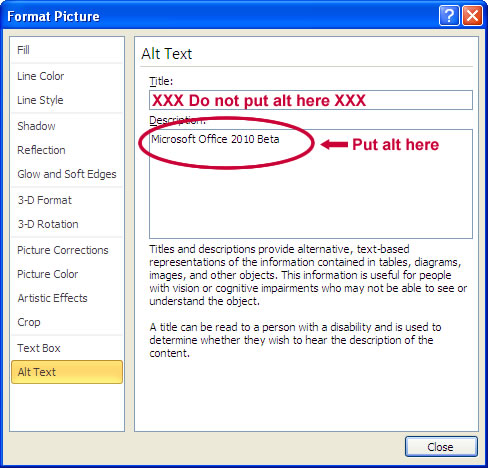
- Right-click on the image and select Format Picture. A dialog box will appear.
- Select the Alt Text tab on the sidebar. Enter appropriate Alt text to the Description field, not the Title field.
Columns
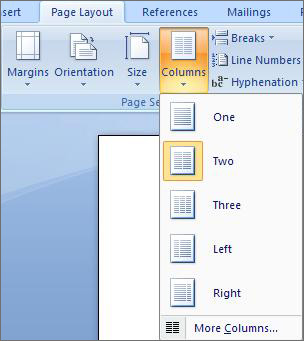
When creating columns, always use true columns, not columns created by hand with the Tab key.
Creating Columns
- Select Page Layout on the Ribbon.
- Select Columns in the Page Setup group.
Data Tables
- Use the Insert Table command to create tables, not by hand with spaces or the Tab key.
- There is no way to easily create table headers in Word.
- The first row can be identified as table headers in PDF (but not in HTML). To do this, Right click on the first row in the table and select Table Properties > Row > Repeat as header row at the top of each page.
Links
Word automatically creates a hyperlink when a user pastes a full URL onto a page. These may not make sense to screen reader users, so more information is needed.
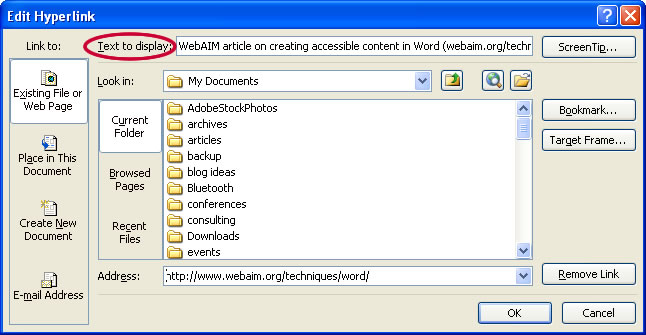
Editing Hyperlinks
- Select a hyperlink, right click, and select Edit Hyperlink or Ctrl + k.
- Change the text in the Text to Display field to a more meaningful description.
Lists
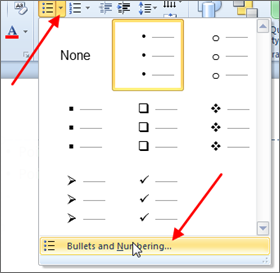
Use true numbered and bulleted lists to emphasize a point or a sequence of steps.
Creating Lists
- Select Page Layout on the Ribbon.
- Select Bullets and Numbering.
Word 2010 Accessibility Checker
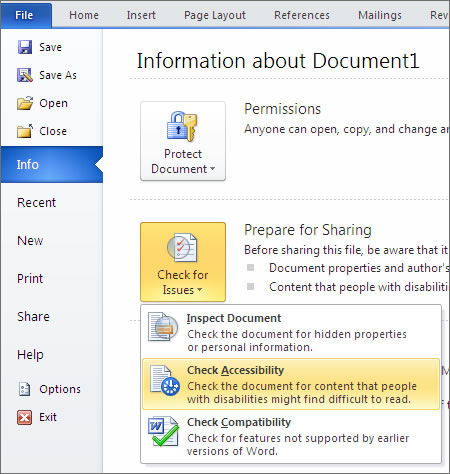
Word 2010 includes an accessibility resource that identifies and repairs accessibility issues.
Running the Accessibility Checker
- Select File > Info > Check for Issues > Check Accessibility.
- The checker presents accessibility errors, warnings, and tips on how to repair the errors.
Other Principles
- Ensure that font size is sufficient, around 12 points.
- Provide sufficient contrast.
- Don’t use color as the only way to convey content.
- Provide a table of contents, especially for long documents.
- Use simple language.
Made possible by a grant from the Fund for the Improvement of Postsecondary Education (FIPSE), US Department of Education. No official endorsement implied.

